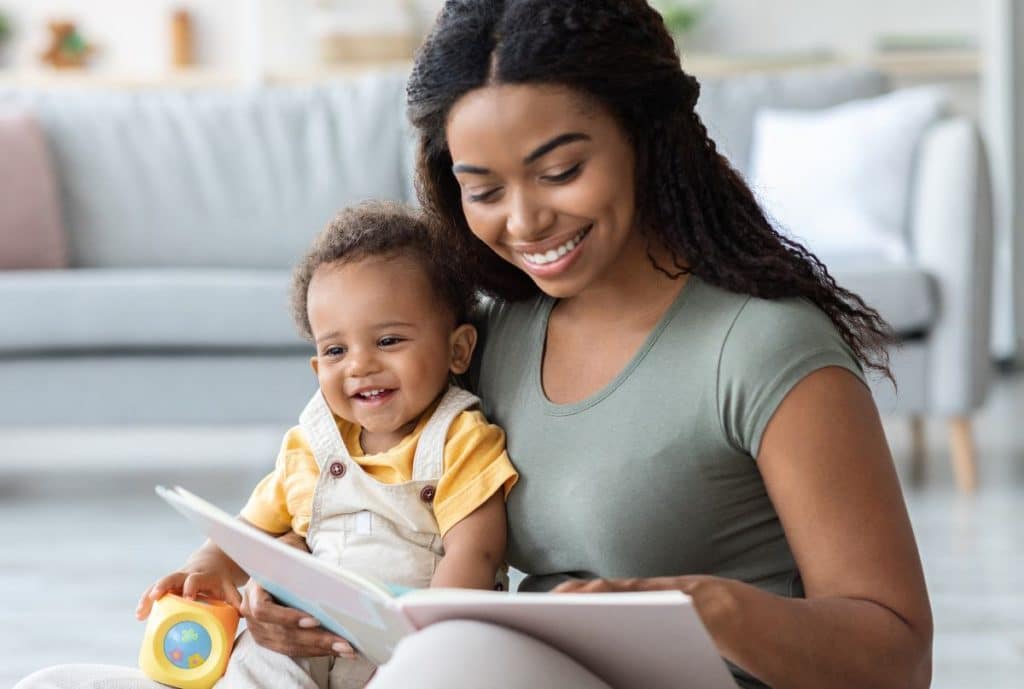
Undoubtedly, language development is one of the key milestones during early childhood development. A significant part of a child’s social and intellectual development hinges on reaching this milestone.
Children who experience a lack of language capabilities may become withdrawn, and this may lead to isolation. Another consequence is the possibility of learning difficulties, ultimately resulting in weak academic performance.
From preschool onwards, covering his lifespan, your child’s language development, to a great extent, determines whether learning will be a breeze or a battle. The language stimulation you give your child will help determine how smart they will be.
There is a close relationship between spoken language and specific learning difficulties, for example, dyslexia. Roughly 60% of people with dyslexia were late talkers, states Prof. Beve Hornsby in her book Overcoming Dyslexia.
Contrary to popular belief, language development is not natural or automatic. Everything a person knows or can do has to be learned, and language is no exception.
Start early
Your baby’s brain wants to start learning before being born, says speech and hearing scientist Dr. Patricia Kuhl. During the last ten weeks of a mother’s pregnancy, babies start learning their mother tongue while waiting snugly in the womb.
Within hours after birth, babies can distinguish between their mother tongue and foreign languages. This research, says Patricia, sends a clear message to all mothers: your baby listens, learns, and remembers during the last phase of pregnancy.
Various studies support Patricia’s message. During the sixth month of pregnancy, babies already start to develop an ear, a sensitivity to their mother’s voice, and the particular rhythm of their mother tongue.
A German study recorded babies’ cries between three and five days old and analyzed the sounds. Half the babies came from French-speaking families, and the other half were from German families. The scientists found a distinct difference in form and sound between the babies’ cries from the different groups.
Therefore, one should start talking to one’s baby before birth and keep doing so after birth, thereby developing the brain’s architecture. They will need this architecture later to read, learn and think smartly.
Parents, grandparents, older brothers and sisters, and caregivers should, right from the start, help to provide the little one with a solid foundation for learning language; they can do this by talking to the new baby.
When? What?

You have many occasions to talk to your new baby during the day, for example, bath-time, while feeding, when changing diapers, and in the car on your way to daycare. Talk about the environment and what you are doing, naming the streets you pass. Use the same sentences, grammatical structures, words, and rhymes, over and over. The sooner you start doing this, the sooner your baby will start talking.
It seems our brains have been wired to recognize and repeat specific patterns and repetitions. This explains why babies’ first words are usually mamma, dadda, yaya et cetera.
The aforementioned is confirmed by research from the University of British Columbia, where scientists monitored the brain activity of 22 newborn babies. At the same time, they were being exposed to recordings of made-up words. Words that end in repeating syllables – such as “mubaba” and “penana” – were mixed with words without repetition, such as “mubage” and “penaku.” The scientists used the latest optical brain scanning techniques and found increased brain activity in the infants’ temporal and left frontal brain areas whenever the repetitious words were being played. However, words without adjacent repetitions, for example, “bamuba” or “napena” elicited no distinctive responses from their brains. This study is one of the first to prove an infant’s inborn ability to distinguish structural patterns in language.
What does this tell us?
People are born with the possibility to systematically and effectively learn and understand language. It is, therefore, never too early to start talking to your infant.
Another interesting fact is that people have passive knowledge of a language on the one hand and active knowledge on the other. We utilize our passive vocabulary when we listen or read, but when we talk or write, we use our active vocabulary.
Your child develops their passive vocabulary by hearing words and phrases that are being repeated over and over and over. After hearing a word or a phrase repeatedly for a sufficient number of times, the word or phrase becomes part of their active vocabulary. Therefore, active vocabulary can only develop and grow through the development of passive vocabulary. For example, research shows that a child who has started talking must hear a word roughly 500 times before it becomes part of their active vocabulary.
It may feel rather stupid to talk to your baby, and yes, initially there is no real verbal response from them. Rest assured, however, that they learn from every word you utter.
Stages of language development
The first year is regarded as the prespeech or prelinguistic phase. Speech development occurs through eye contact and sound exchanges between the caregiver and baby. Sounds like dadadada and mamama and waaaa are examples of utterances during this stage.
After this initial stage, the one-word sentence surfaces. Between 10 and 13 months, your baby will start to say a word. This word is usually within context and is probably accompanied by non-verbal gestures. Your baby may, for example, lean over, reach for his bottle and say “botty.” You will then interpret this as, “pass my bottle so that I can throw it over the side of the crib again.” Another example is when Dad enters the room and baby responds with “Dada!” – maybe “Daddy pick me up!” is what your baby really wants to say.
The child reaches the level of two-word sentences by the age of 18 months. At this stage, the sentence has a noun or a verb, and an adverb. This enables the child to formulate a sentence that is descriptive, negative, demanding, or inquiring. Let us look at a few examples:
“Doggie small.” (descriptive)
“No egg.” (negative)
“More sugar.” (demanding)
“Where ball?” (inquiring)
We must also keep in mind that two-word sentences are uttered within the context of the situation and supported or enhanced by nonverbal communication. Therefore, young children convey rather complex messages in this way.
Between 24 and 30 months, children start to use more complicated multi-worded sentences.
Read to your child
Whereas children’s books are usually graded for specific ages, it is unnecessary to wait until your child is three or four years old before you start reading to them. Instead, you can start when they are two or three months old. The secret, however, is to read the same story repeatedly. Children love this, especially once they start to know the story and when they can correct you when you have made a “mistake”!
Children who listen to stories from an early age develop a more extensive vocabulary and a good sense of correct grammatical constructs.
According to Dr. Cathy Hamer, research has shown that parents who talk to their children, read to them, attentively listen and react to their chattering, gestures, and words provide their offspring a distinct advantage. More conversations between infant and parent result in better language development for the child.
There is a significant positive correlation – a strong relationship, therefore – between a child’s level of language development (comprehension and use of words in two- or three-word sentences) at age two and academic results at school. The success of a school beginner is usually a good indication of later educational achievement. Research also shows that parental input, especially in language development, eventually plays a more critical role in school readiness than the parent’s career, income, or status.
It is free of charge!
Our babies and toddlers are exposed to many forms of stimulation, such as scientifically developed toys, shapes, colors, and sounds. Dolls, toy cars, stuffed toys, and educational toys are designed and manufactured so brilliantly that we, parents, grandparents, and family, are spoilt for choice when we shop for the little ones.
This is wonderful, yes, but still… one of the most essential “toys” for the development of a baby’s cognitive skills is priceless: Regular exposure, right from within the womb, to the voices of mom and dad, teaching them the words of their home language and the sounds of their mother tongue.
.
Edublox offers cognitive training and live online tutoring to students with dyslexia, dysgraphia, dyscalculia, and other learning disabilities. Our students are in the United States, Canada, Australia, and elsewhere. Book a free consultation to discuss your child’s learning needs.

